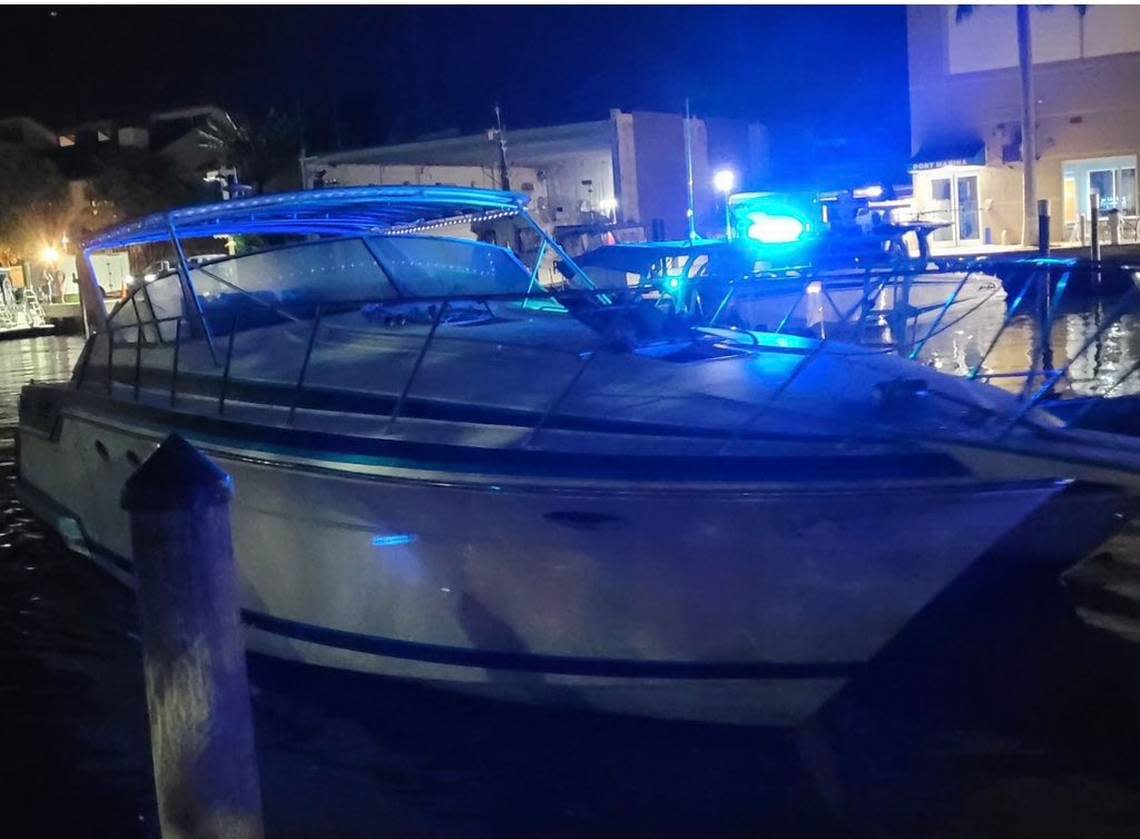Border Patrol says migrants from Brazil, Bahamas and Haiti arrived in Fort Lauderdale
The U.S. Border Patrol says it apprehended 12 migrants of different nationalities after a yacht arrived on a Fort Lauderdale beach Tuesday night.
Fort Lauderdale police said about 25 migrants came ashore when the boat appeared just a few yards off the beach in the 700 block of Seabreeze Boulevard just before 6 p.m.
It’s not clear if some of those people got away or the preliminary numbers were wrong, but the Border Patrol said in a statement released on Twitter Wednesday that it encountered nine people from Haiti, two from Brazil and one from the Bahamas when its agents arrived.
Neither agency could be immediately reached for comment to address the discrepancy.
Around two dozen migrants landed on a Fort Lauderdale beach Tuesday afternoon, according to police.
READ MORE: Florida Keys migrant landings pick up again, along with a mystery: a boat with no people
News about the landing was first reported by WSVN 7 News.
None of the people who came in on the boat required medical attention, although Fort Lauderdale Fire Rescue had a large presence in the area, including its dive team, Assistant Chief Timothy Heiser told the Herald.
“The police department ran most, if not all, of the show,” Heiser said.
Most recent migrant journeys have been to Keys
South Florida is experiencing the largest influx in maritime migration, mostly from Cuba and Haiti, in nearly a decade. Most of the dangerous maritime journeys across the Florida Straits, however, end up in the Florida Keys, much farther to the south than the Fort Lauderdale landing.
And, most of the boats on which the migrants have been arriving are homemade “rustic” boats creatively pieced together from everyday materials like highway barriers and welded fuel drums. The boat that arrived in Fort Lauderdale that was shown by Border Patrol in its statement appeared to be a small yacht, roughly 40 feet long.

The migrant situation in the Keys made international headlines over the New Year’s weekend when around 500 people from Cuba arrived on over two dozen boats in the remote Dry Tortugas National Park, located about 70 miles west of Key West. They set up camp at Fort Jefferson on Garden Key within the park’s boundaries, overwhelming the small staff of rangers assigned there and prompting federal officials to make the unprecedented move of shutting down a federal park.
While the migrants were stranded in the Tortugas, meanwhile, hundreds more Cubans came ashore up and down the Keys in mostly rustic, makeshift vessels, straining both Border Patrol agents and local law enforcement, whose officers had to sit with the new arrivals for hours before federal officials could arrive to process them.
The U.S. Coast Guard removed all of the migrants from the Tortugas on Thursday, and the park reopened to the public on Sunday. But, Gov. Ron DeSantis on Friday signed an executive order activating the Florida National Guard and tasking state agencies like the Florida Fish and Wildlife Conservation Commission, the Florida Highway Patrol and the Florida Department of Law Enforcement with patrolling the Keys and its surrounding ocean, Gulf and bay waters for incoming migrants.
The state operation is being run by the Florida Department of Emergency Management, the agency said in a statement Tuesday with a release of details for the first time since Friday’s announcement.
National Guard, law-enforcement response
According to the statement, the National Guard is sending 12 aircraft and 100 to 150 soldiers to “coordinate efforts with the U.S. Coast Guard and FWC aviation teams.” In addition National Guard soldiers will help FWC officers on the water, the statement says. It’s not clear if the soldiers and FWC will now be tasked with actually preventing migrants from reaching land, which is a federal responsibility, or if they will simply act as additional eyes in the air and water for the Coast Guard, Customs and Border Protection and Border Patrol.
The FWC has sent two larger patrol boats to assist the Coast Guard, Customs and Border Patrol around the Marquesas (about 20 miles west of Key West) and the Tortugas.
The FWC are also sending 16 additional personnel to the Keys and set up base camps and command posts in the Middle Keys city of Marathon and Key West, FDEM said.
FDLE assigned about 24 agents to the Keys, in addition to a mobile command bus, according to the statement.
The additional personnel began arriving Sunday. In one migrant landing in Key Largo Sunday morning, the Miami Herald saw a group of six FHP troopers respond. To put that in perspective, on a normal day, there are often less than six troopers patrolling and enforcing traffic laws along the nearly 120 miles of U.S. 1.
